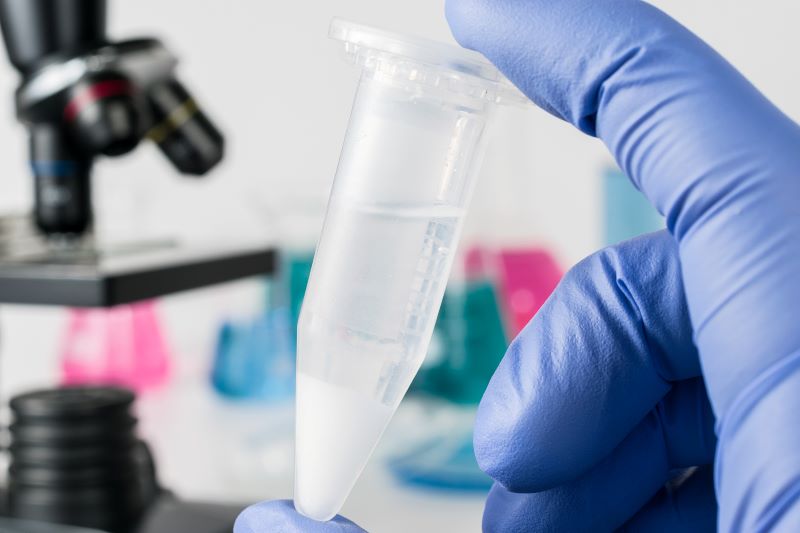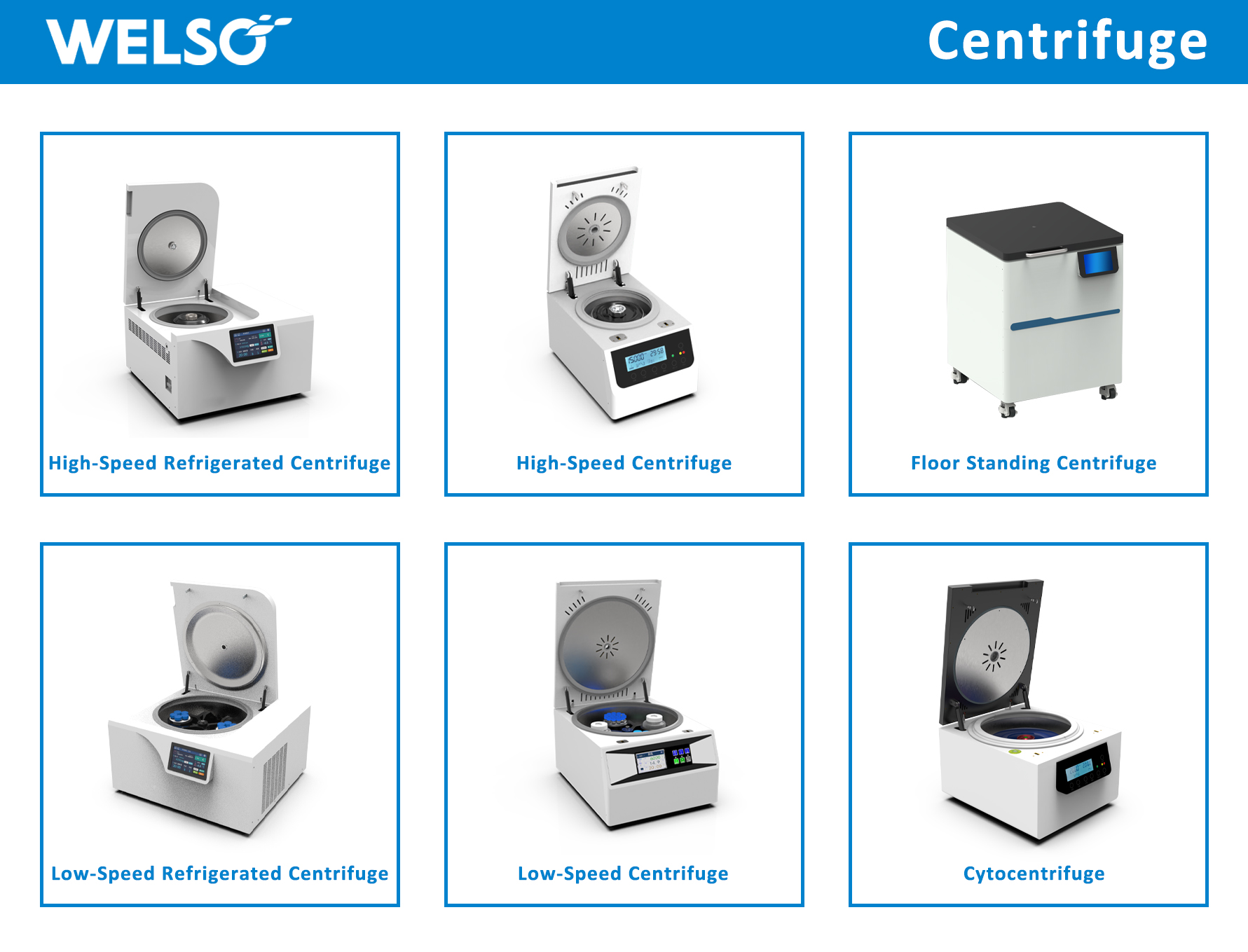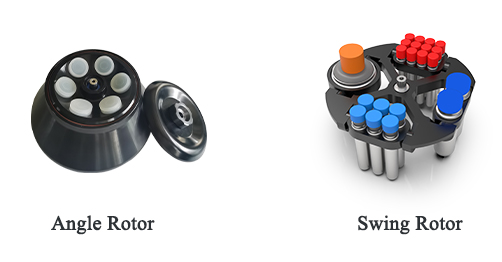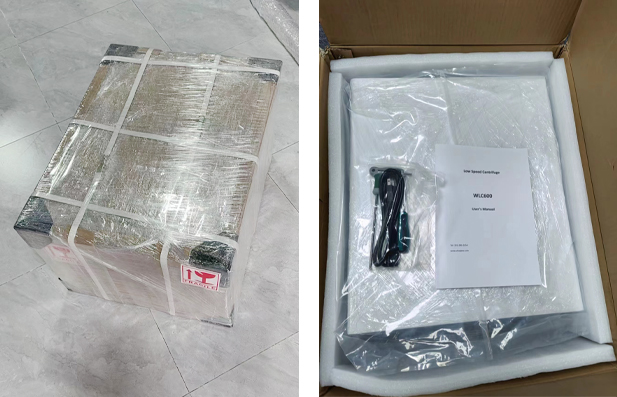The first centrifuge was invented in Germany in 1836. In 1876, a Swedish invented the first centrifuge that could separate cream and milk fat from milk. This was the first time that a centrifuge was used in the food industry. In the 20th century, Swedish scientists created a high-speed centrifuge and separated hemoglobin from blood for the first time. Since then, centrifuges have opened a new chapter in biochemical research. Today, centrifuges are widely used in biochemistry, medical, food and other fields.

Hope the centrifuge information that collected by Welso might be helpful to your understanding.
We can classify centrifuges from the following aspects:
Volume and structure: mini centrifuge, cytocentrifuge, bench top centrifuge, floor standing centrifuge, etc. The mini centrifuge has the smallest capacity and volume while the floor standing centrifuge has the largest volume and capacity.
The cytology centrifuge is a special centrifuge that can separate thin-layer samples with smear rotor. The researchers smear the tested cells or tissues to the glass slide, as the rotor rotation is horizontal, so it can separate various cell types by the centrifugal forces and then observe them on the slide.
Temperature: It is divided into refrigerated centrifuge (Cryo centrifuge) and normal temperature centrifuge. The temperature range of refrigerated centrifuge is generally between -20℃-40℃, and the temperature range of normal temperature is generally below room temperature (15℃-25℃)
Speed: low-speed and high-speed centrifuge. The speed within 10,000rpm is low speed, and the speed exceeding 10,000rpm is high speed.

RCF to RPF Calculation
We know that the working principle of a centrifuge is based on the force generated by the inertia of an object during rotation. The centrifugal force is referred as RCF, and the rotational speed is referred as RPF. These two parameters are used to describe the centrifugal separation process. RCF refers to the centrifugal force, which is the force experienced by the sample during the centrifugation process. RPM refers to the revolutions per minute, that is, the rotation of the centrifuge, the speed of the centrifuge represents the number of revolutions per minute.
During the centrifugation process, put sample solution into the rotor, the relative centrifugal force (RCF) generated by the rotation of the rotor caused by the motor causes the heavy objects (particles) in the sample to move to the bottom of the centrifuge tube. The separation performance depends on the speed, rotor radius and operating time. RCF depends on the horizontal distance from the sample position to the center of the axis, that is, the radius of rotation (r) and the rotation speed (n)
the calculation formula is as follows:
RCF=1.118×10-5×n²×r(×g)
N-(r/min)
R-(cm)
G-(9.8N/kg)
Rotors Types
Centrifugal rotor is the core part of the centrifuge which has following types:

Angle Rotor
Angle rotor refers to the rotor with a certain inclination angle between the centrifugal tube chamber and the rotating shaft. In the process of centrifugation, the angle before the centrifugal tube and the shaft is fixed. When the sample is centrifuged, it will first precipitate to the side wall of the centrifugal tube, and then slide down to the bottom of the centrifugal tube to gather. It is the most extensive rotor.
Note: It is recommended to use a cover for angle rotor centrifugation. If not, centrifuge chamber will cause great resistance friction which lead to high temperature. This will affect motor and compressor so as to shorten centrifuge service life. Aerosol-tight rotor can also avoid leakage.
Swing Rotor
Swing rotor usually consists of 4-6 bucket. Different adaptor are used to put various tubes and plates such as centrifuge tubes, deep well plates, PCR plates and Elisa plates. During centrifugation process, the centrifuge tube and the axis angle will move from 0°to 90°. And sample will be separated for easy collection. So its speed will be much lower than same model angle. When centrifugation stops, centrifuge tube and shaft will be parallel.
How to make right model choice?
When chooing a centrifuge, we need to make sure our requirements by confirming following parameters.
Speed: Centrifuge can be classified by speed to low speed centrifuge and high speed centrifuge. Each centrifuge has speed limit and speed is also different according to different rotor types and sample volume.
Temperature: Some samples will destroyed by high temperature so user needs to choose cryo centrifuge (refrigerated centrifuge) which keeps the sample temperature.
Volume: Generally, centrifuge Volu,e = each tube volume*tube number, total working volume and chamber volume is same.
Rotor: Rotor has its fixed model and type which matches centrifuge volume. So it is very important to choose a right rotor.
Volume: Choose floor standing type, benchtop type or mini type according to experiments requirements.

Transportation and Storge
It is recommended to use wooden box or carton box to pack the centrifuge with foam filled inside. Transportation needs to avoid vibration and crush.

Storage
It is recommended to put centrifuge in a well-vented, dry and clean indoor without any corrosive or explosive objects. If centrifuge will not be used in a long term, please put it into box.
Clean the centrifuge with clean cloth with mild detergent before using if it is stopping running for over one week.

Follow official account